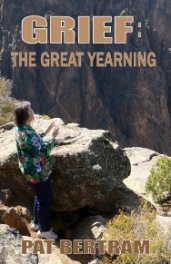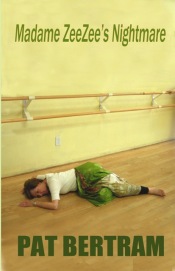Moods and personalities are supposedly two different, intertwined things. Mood is considered a fleeting emotion, where personalities are static, but this distinction might not be true. I once read a theory that there is no such thing as a mood, that moods are actually different personalities. According to this theory (which I cannot find online, so I can’t cite my long-forgotten source), we all have multiple personalities, though most of us don’t have a multiple personality disorder. I suppose what we have is a “multiple personality order” since we know who all our personas are.
 It seems a silly idea, and yet, we’ve all experienced that shift in personality. For example, you’re feeling sorry for yourself because your husband is neglecting you, and then you see the exhaustion in his face, and as if your brain toggled a switch, you stop feeling sorry for yourself, and see he has problems that leave little room for you. It doesn’t make his neglect right, but it does make it understandable. And what about the inner child that has become so clichéd? That inner child is real, not just a mood but a personality.
It seems a silly idea, and yet, we’ve all experienced that shift in personality. For example, you’re feeling sorry for yourself because your husband is neglecting you, and then you see the exhaustion in his face, and as if your brain toggled a switch, you stop feeling sorry for yourself, and see he has problems that leave little room for you. It doesn’t make his neglect right, but it does make it understandable. And what about the inner child that has become so clichéd? That inner child is real, not just a mood but a personality.
I suppose this all makes sense to me because I have long been aware of my different personas, have often felt that toggle switch from one point of view to another. (It’s possible these are simply different mindsets rather than personalities, but what is a personality if not a mindset?)
I did a temp job a long time ago, where I was supposed to be a shill for some guy who was trying to get VW bug owners to rent space on their auto bodies. I was my normal reserved, almost-shy self before the show, which made the guy very nervous. He needed vivacious, outgoing women to help. Well, once the thing started, that’s who I was. Radiant, charming, “on.” It’s the same with dancing. People tell me that when I don my wig and costume, I have a different personality. Which, perhaps, is closer to the truth than they realize.
Once someone asked me a question that I couldn’t answer. I had too many conflicting ideas and feelings about the subject, each of my personas wanting something different. In the end, I sent a response, telling this friend what each of my personalities wants. (Following is a generic list, rather the specific answers to the conundrum my friend posed.)
The student wants to learn the truth.
The logician wants to make sense of it all.
The mystic thinks that truth makes sense of itself.
The sensualist wonders what things feel like.
The artist wonders what others think things feel like.
The seer sees, understands, and never judges.
The giver says, “Anything for you.”
The selfish one says, “All for me!”
The waif (the sad little girl who never had a childhood) just wants to learn to play.
The naif doesn’t know enough to know what she wants.
Wonderkrone knows too much to know what she wants.
The bookworm says, “Where can I read about it?”
The adventurer says, “Hell, yes, I’ll do it!”
I was again made aware of these different personas after my northern adventure, where I hiked for many miles by myself in the redwood forests and along deserted ocean shores. After each hike, I could barely remember what it felt like — the awe, the utter aloneness, the frustration, the joy seemed to have happened to someone else. Each time I went back to hike, however, those memories and feelings were immediately available, adding enrichment to the experience, as if I’d always been there, while my other life receded into the background as if it were a distant memory.
Now that I am back in the heat of the desert, I can barely remember my cool northern adventure. I see the photos, remember how wonderful my hosts were, still feel close to my friend, and yet . . . it’s all so distant, as if it happened to someone else. I also feel different. Timid, almost. The woman who so gladly embraced her wildness is now taking tentative steps, aware of everyday dangers. (Still, I’m planning my next trip, a southern adventure, just haven’t yet decided if I want to go by train or to drive. Driving puts things more in my own hands, giving me the ability to visit parks and people along the way. The train gives me the opportunity to see the country, like a long slow video playing outside the window.)
Perhaps the point of all these personalities (yep, the logician always needs to get to the point after letting the mystic ramble), and the point of us, is to create and develop as many personalities as possible, and to finally integrate all the personalities into a whole. Or maybe it’s enough to just go with the flow of the different mindsets, experiencing life from myriad points of view, because some of the personalities are too opposite to be integrated. Can you be a timid bookish person sitting at home reading and at the same time be an adventurer out in the wilds? Can a woman be quietly reserved and vivaciously outgoing at the exact same time?
Whatever the truth of mood, persona, mindset, and personality, I’m looking forward to the next person I create. Because yes, I do believe we create different personalities when we step out of our personal status quo. The woman I created all unknowingly when I fell in love with Jeff, the previously unloved woman who learned to love with all of her being, the independent soul who could give herself over to a shared life, died when he did. (Or perhaps she was simply subsumed into the whole of me.) The grieving woman, the woman who gave herself over to the profound powers of grief in the hopes it would teach her how to live again is also being subsumed into the whole.
One personality I still have a hard time creating is the joyful humorist, the one who finds joy and humor in every permutation of life, in every setback and loss, in every idea no matter how seemingly foolish. This personality has eluded me all my life, but someday, I know, I will finally create her (or she will create me). For real.
And maybe someday, I will learn to go beyond mood, persona, mindset, personality, and experience life raw as I did in the wilds. No point of view — just being.
***
(Pat Bertram is the author of the suspense novels Light Bringer, More Deaths Than One, A Spark of Heavenly Fire, and Daughter Am I. Bertram is also the author of Grief: The Great Yearning, “an exquisite book, wrenching to read, and at the same time full of profound truths.”)









September 12, 2015 at 1:33 pm
So good. Much appreciated, Pat.
September 12, 2015 at 2:14 pm
No point of view–just being: LOVE that. Is that the definition of nirvana? (If not, it should be!)
September 12, 2015 at 2:34 pm
I think you’re right about no point of view being Nirvana. I have a hunch we have to work through various points of view to reach a state of being, otherwise it seems more a state of nonbeing.
September 12, 2015 at 3:01 pm
I see mindset as distinct as personality. In fact, I think mindset might just be part of personality. When I’m writing a story, it’s a different mindset than when I’m blogging, yet it’s still a part of me and my personality (among other things) going into what I’m doing.
September 12, 2015 at 7:51 pm
Pat, you amaze me. How you are able to dissect your thoughts and emotions is just amazing! I think it’s because you take time to discover what those thoughts and emotions are. So many of us just rush on to the next ones. It’s the “stop and smell the roses” thing, and makes for better understanding. Brava!
September 12, 2015 at 8:08 pm
Thank you, Coco. It’s nice to know I’m amazing. From my POV, I’m just amazingly average. Well, of course, I would think that — we have no one else to compare our POV to, so whatever we think, do, feel, is the average for us. Pat Bertram author of More Deaths Than One and A Spark of Heavenly Fire, available from Second Wind Publishing http://patbertram.com From: “Bertram's Blog” To: ptbertram@yahoo.com Sent: Saturday, September 12, 2015 7:51 PM Subject: [Bertram’s Blog] Comment: “Mood, Persona, Mindset, and Personality” #yiv0798439827 a:hover {color:red;}#yiv0798439827 a {text-decoration:none;color:#0088cc;}#yiv0798439827 a.yiv0798439827primaryactionlink:link, #yiv0798439827 a.yiv0798439827primaryactionlink:visited {background-color:#2585B2;color:#fff;}#yiv0798439827 a.yiv0798439827primaryactionlink:hover, #yiv0798439827 a.yiv0798439827primaryactionlink:active {background-color:#11729E;color:#fff;}#yiv0798439827 WordPress.com | | |
September 12, 2015 at 8:43 pm
Carl Jung wrote about what you are talking about in his book on Masks. Humans compartmentalize. It is how we survive and even thrive in a very human world of multiple tasking, various needs and responses. You don’t for example relate to a sister the way you would to your mother. What’s more, you are not expected to. Different relationship requiring different responses. Plus both relationships have evolved over time through various circumstances. As Jung would put it different masks but each mask belongs to you and is you.
September 12, 2015 at 10:11 pm
I never knew I was a Jungian. We humans compartmentalize, I suppose as a survival mechanism, not just a defense mechanism. It helps us be kind and comfortable with allies but alert and wary with those who wish us ill. A way of not getting our signals mixed.